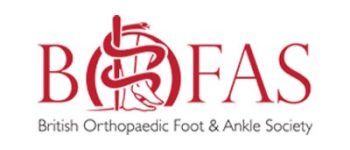About Midfoot Arthritis
Midfoot arthritis refers to osteoarthritis which results in pain in the joints located at the arch of the foot, and stiffness of the foot. Osteoarthritis thins and wears down the cartilage on the surfaces of joints, which in turn, can cause pain, inflammation and swelling.
Causes
The factors which can typically cause midfoot arthritis, and osteoarthritis in general, include; an increase in body weight; genetics (family history); joint damage as a result of conditions such as rheumatoid arthritis and gout, or injury; getting older; and biomechanics, such as poor alignment of the foot and ankle or a flat, high arched foot posture. Also a previous fracture involving the joint can result in arthritis.
It should be noted that exercise such as jogging and playing sport has not been found to contribute to midfoot arthritis, or increasing the risk of developing it.
Symptoms
The predominant symptom of midfoot arthritis is pain which is felt at the top of the foot’s middle section. In some cases, shooting pain can also be experienced down to the toes. These symptoms are commonly aggravated by walking up or downstairs, which can trigger stiffness and pain.
A marked decrease in range of motion in the foot can develop, which is accentuated on surfaces that are uneven. In cases of severe midfoot arthritis, swelling around the affected area can be seen. Not everybody with midfoot arthritis will experience painful symptoms, even when the condition is quite advanced.
Treatment
There are several treatment options which can address midfoot arthritis.
Diagnosis can begin with your doctor making a physical examination, assessing tenderness and range of movement. Further tests, such as x-ray, are usually needed. More detailed tests such as a CT scan or MRI can sometimes be helpful.
Non-surgical treatment options for midfoot arthritis include; orthotics, including inserts such as insoles which offer extra support at the arch of the foot, reducing pain; changing footwear to types with more support at the arch of the foot and around the ankle; and exercises focused on building and maintaining strength in the affected foot, as well as increasing range of motion.
Whether painkillers, such as nonsteroidal anti-inflammatory drugs like ibuprofen, are suitable to address midfoot arthritis is open to debate but they are a good place to start. They could be effective in cases where there is a lot of inflammation. Corticosteroid injection therapy can be recommended for people with severe midfoot arthritis symptoms, it is a procedure which typically uses ultrasound guidance in order to place the needle as accurately as possible. Corticosteroid injection therapy can enable pain relief in the short to medium term, improving mobility for those with midfoot arthritis.
Surgical treatments which can be recommended for midfoot arthritis include midfoot joint fusion. Midfoot fusion is usually performed under general anaesthetic although local anaesthetic may also be used to enhance pain relief immediately after surgery.
Your surgeon will make an incision in the upper part of your foot and remove the cartilage from your joint surface(s). Using metal plates and screws they will compress the joints together to hold the joint in position. The wound will be closed with stitches or staples and a cast may be applied to hold the foot in place and control post-operative swelling. The length of your fusion surgery will depend on what area(s) need correction. Joints commonly involved include the tarsometatarsal joints or the naviculocuneiform joints. Once the surgery is performed, the foot is typically immobilised with a plaster cast for up to 6 weeks non weight-bearing. Once this period is over, weight-bearing can commence in a boot which is gradually weaned off.
As with all foot surgery it is possible for swelling to persist for some months after surgery and is completely normal. This swelling will eventually completely subside with time and can take up to 12 months but often goes well before this










